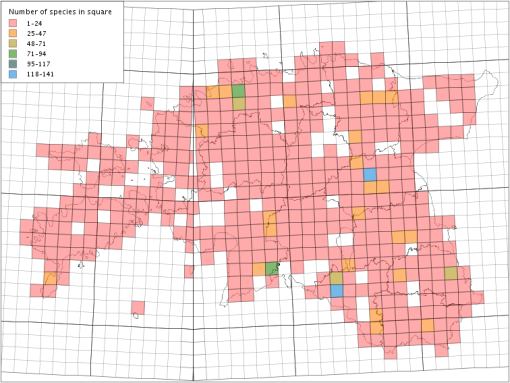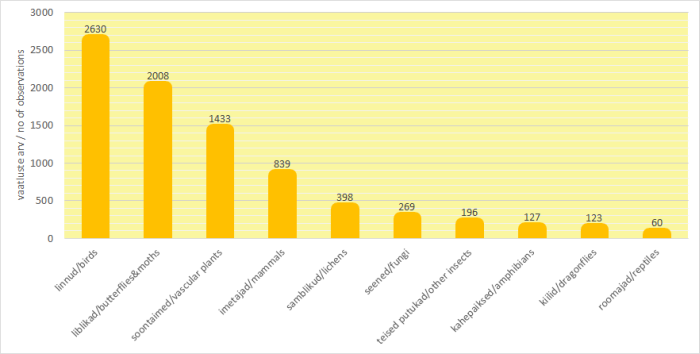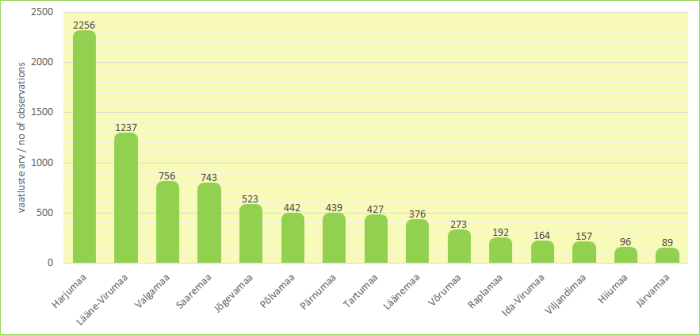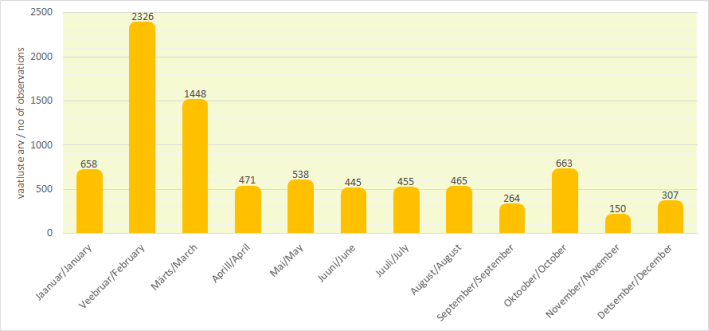Report of database usage in 2015
USING OF NATURE OBSERVATIONS DATABASE IN 2015
In 2015, users submitted 8190 observations to the Nature
Observations Database. It was the best year in the history of the database This map shows distribution of inserted observations in 2015.

By groups of species inserted observations divided as
follow (here are only TOP 10 of species groups):
1) birds - 2630 observations,
2) butterflies/moths - 2008 observations,
3) vascular plants - 1433 observations,
4) mammals - 839 observations,
5) lichens - 398 observations,
6) fungi - 269 observations;
7) other insects (not include butterflies/moths and dragonflies) - 196 observations,
8) amphibians - 127 observations,
9) dragonflies - 123 observations,
10) reptiles - 60 observations.

The most popular species which observations were entered were:
Crex crex 516 observations, Eptesicus nilssonii 222 observations, Dendrocopos major 215 observations, Caprimulgus europaeus 122 observations, Actitis hypoleucos 99 observations, Lanius collurio 91 observations, Anas platyrhyncos and Capreolus capreolus 86 and Dryocopus matius 80 observations. Summary observations of 1411 species were entered during the year.
Observations of species, which are under nature
conservation in Estonia, were entered 3167: 50 of these were observations of species under protection category I, 1017 under protection category II and 2100 under protection category III.
189 persons entered their observations to the Nature
Observations Database in 2015. 92 of them inserted three or more
observations, 51 of them inserted more than 10 observations and 14 of them inserted more than 100 observations. Two persons entered even more than 1000 observations.
By county: users entered more than 100 observations to
the Nature Observations Database from 13 counties. First was Harju (2256). Followed Lääne-Viru (1237), Valga (756), Saare (743) and Jõgeva (523).

Observations submitted to the database were more frequent
in February and March. The biggest numbers of inputs were in February (2326). Next were in March (1448). In January and October and in spring and in summer the observations were entered quite equally (440-660 observations per month). In September, November and December number of observations was smaller.
